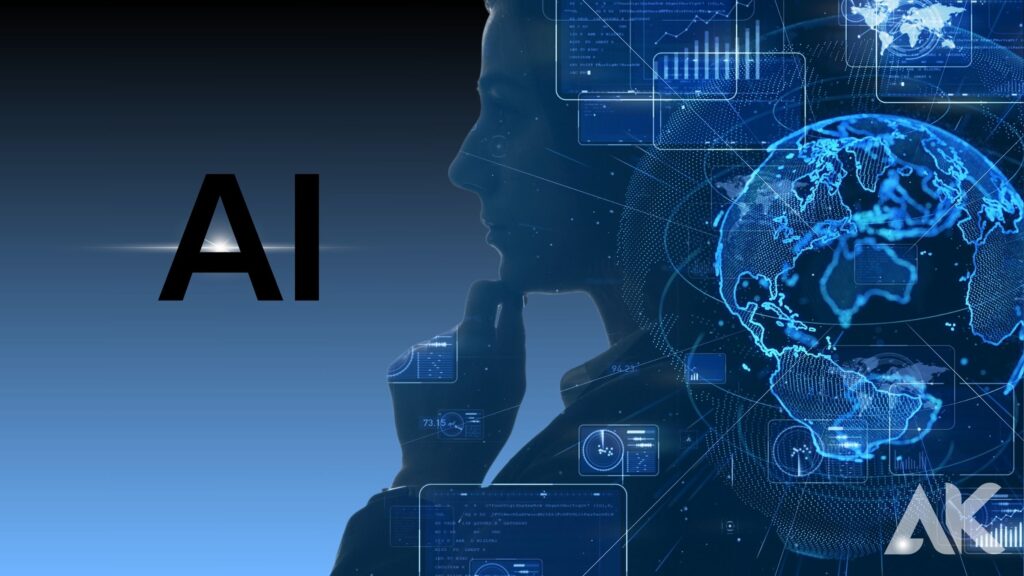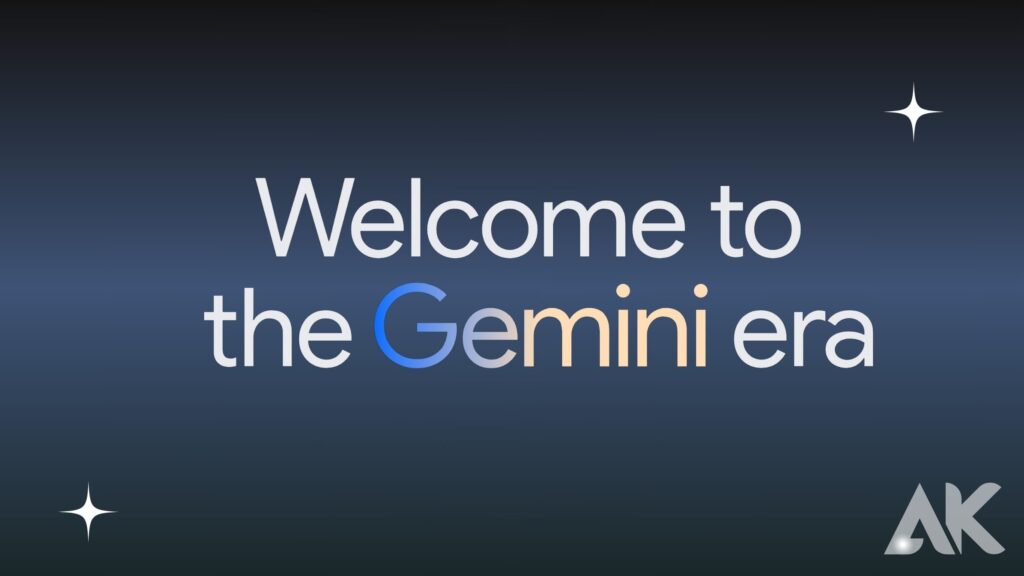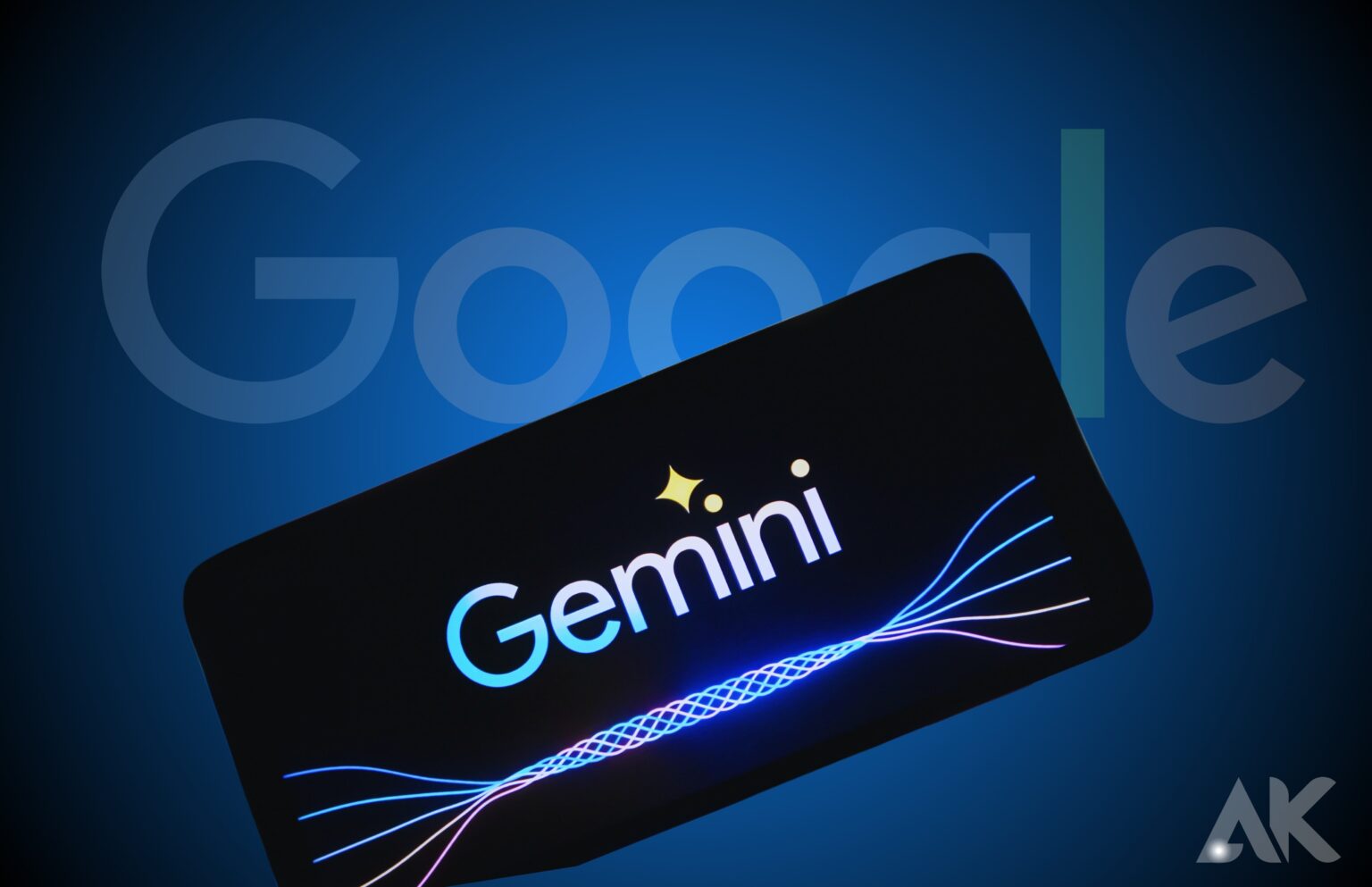Google has joined the rapidly evolving field of artificial intelligence with the launch of Gemini. Gemini, a state-of-the-art AI, exemplifies how computers are altering our perceptions and relationships with the environment. Yet, what is the true meaning of Gemini? Gemini embodies Google’s multimodality efforts to a pristine degree. Various forms of text, images, audio, video, and even code may be input, understood, and processed by it.
The ability to effortlessly process many forms of data is what sets Gemini apart from its predecessors. This is accomplished by integrating different kinds of data via an intricate algorithmic dance, which allows it to think about the world from a more human-like perspective.
Innovations in sophisticated AI, such as Gemini, mark a significant advancement. Just as humans utilize our many senses to make sense of our environment, systems capable of multitasking and bridging gaps between them have long been the goal of researchers in this area. By keeping context and details across all platforms in mind, Gemini facilitates decision-making, information processing, and more authentic and trustworthy social connections.
Google is presently at the forefront of AI research and development due to its substantial investment in AI. Artificial intelligence (AI) has the potential to revolutionize several industries and aspects of daily life, and the tech giant has invested much in studying this possibility.
Besides being the pinnacle of AI technology at the moment, Gemini also reveals its potential future selves. Gemini is just one of several Google AI initiatives that are always looking to test the boundaries of what smart computers can do. They are doing this by revolutionizing our relationship with technology and establishing new benchmarks for the industry.
Understanding multimodal AI

When it comes to AI, multimodal AI is revolutionary. It opens the way for a future when robots can simultaneously engage with and interpret a variety of data that resembles human intelligence. In artificial intelligence, multimodality refers to the ability of computers to process and understand a wide variety of data types, including but not limited to text, images, audio, and video. This approach resembles the intricate mental processes that humans use daily to comprehend and navigate their environment.
One cannot overstate the significance of mixed learning in artificial intelligence. By combining many forms of input, AI models such as Gemini can comprehend meaning and context more intricately than a single-mode system could. For instance, multimodal AI may take into account not just verbal signals but also voice quality and facial expressions while determining whether or not to understand a joke.
Accurate guessing, sound decision-making, and the development of adaptive AI systems capable of functioning in many environments and completing challenging tasks on par with human ability all depend on our capacity to acquire deeper insights.
Multimodal AI differs from conventional AI models in both its construction and its operation. Even though traditional models excel in text analysis or picture identification when given independent data, they often struggle when asked to think across modalities or combine data to provide a more complete perspective. In contrast, Gemini excels with multimodal AI due to its initial training with a variety of data sources.
It facilitates intermodality and helps it happen more effortlessly. The AI app business may be in for a surprise because of this fundamental difference—a change in philosophy and design that paves the way for a more integrated kind of intelligence that is far more akin to human reasoning.
The architecture of Gemini

Gemini’s innovative capabilities originate from its carefully planned architecture, which was developed with a profound comprehension of the complexity and importance of multimodal AI. This AI behemoth’s primary components and layout demonstrate its exceptional capability to process and comprehend several types of data simultaneously.
A state-of-the-art neural network architecture, including transformer models and convolutional neural networks, forms its core. Because of this, it excels in a wide variety of tasks, including word recognition and picture comprehension. This intricate pattern is crucial for Gemini to comprehend and engage in any kind of human discourse.
Integral to Gemini’s architecture is its multimedia pre-training method. This innovative training approach provides the AI model with a wealth of diverse, mixed data from the very beginning. In that manner, it can understand the specifics and patterns of all the data types beforehand without requiring any fine-tuning. Gemini may use this foundation to develop a solid grasp of the subject matter, which can then be honed to perfection. Unlike traditional AI models, which often need extensive task-specific training before excelling in a variety of modes, this one doesn’t.
The adaptability of Gemini is shown by the fact that its structure incorporates aspects of freedom and expansion. Various versions of the model are available; the smallest, the Gemini Nano, is optimized for use in on-device apps; the next largest, the Gemini Pro, is capable of handling a broader variety of tasks; and finally, the largest, most powerful, and officially Google-endorsed, model is the Gemini Ultra.
With this adaptable approach, every need, from basic mobile applications to complicated data-heavy computer jobs, can be fulfilled with a Gemini model. With so many options, it’s clear that Gemini’s infrastructure has to be adaptable to work with a wide variety of devices and settings. This ensures its continued use both now and down the road.
Features of Gemini
Gemini stands out because it is naturally directional, which is a design concept that was built into the system from the start. Unlike most models, which add multimodal capability after the fact, Gemini was designed from the start to process, understand, and connect different types of data naturally and in a way that works well with others. This method from the ground up makes sure that Gemini can analyze text, look at pictures, and understand sounds with the natural ease that comes from using these different sources every day.
The model is very good at pulling out semantic meaning from different types of data. This lets it do tasks that require a deep understanding of the world, like answering visual questions or making material that can be used across multiple modes.
Gemini has a wide range of applications and offers cutting-edge features in many areas. This includes but isn’t limited to, powerful natural language processing, speech, and picture recognition, and even decoding complex code. This shows how flexible its design is. Google has worked on Gemini’s skills so that it not only does better than other models at single tasks but also sets new standards for tasks that need to combine different types of information.
The AI is designed to be flexible and work well in a wide range of situations, from running complex business solutions to improving how people connect with consumer-grade smartphones. Gemini’s wide range of skills means it can handle the digital world’s growing complexity. This opens up a lot of new options that push the limits of what AI can do.
Applications of Gemini
Gemini has a lot of different uses, and those uses change all the time. One example is how well it works with business solutions. Gemini’s unique ability to handle multiple types of data at the same time means that businesses can automate complicated tasks like customer service. Gemini can understand and participate in conversations that include text, voice, and visual cues.
It can also combine information from different sources to provide detailed business intelligence and predictive analysis, which is important for tasks like optimizing the supply chain and planning for preventative maintenance. Because of this, AI has led to a change that makes things more efficient, improves the customer experience, and makes it possible for corporations to make better decisions based on data.
Developer Tool Empowerment
Gemini opens up a new world of AI-powered creation tools, which is great for coders. Its bidirectional roots make adding advanced AI features to software and apps easier, which encourages creation and innovation. With Gemini’s advanced language processing, developers can make user interfaces more natural by adding natural talking features, or they can use its picture recognition skills to make games that feel more real. Gemini is very flexible and powerful, and it can also automate and speed up the code writing and review processes. This lets developers focus on high-level design and come up with creative solutions to problems.
On-Device Application Innovation
For on-device apps, Gemini’s speed is the most important thing. It was made to work on mobile devices and adds features that weren’t thought to be possible on small hardware before, like accurate language translation and augmented reality that can understand what’s going on around it. Because of this, users can have a smarter and more personalized experience on many devices, from smartphones to the rising Internet of Things (IoT).
Gemini’s on-device features open the door to a new generation of flexible apps that can handle large amounts of data and become deeply connected with the user’s surroundings and daily activities. With the help of no-code platforms like AppMaster, developers can use Gemini’s powerful features in on-device apps with a level of speed and ease that has never been seen before. This opens the door for a future where everyone can use advanced AI tools.
Revolutionising Content Creation
Gemini affects the creative industries because it changes the way content is made by using its advanced knowledge of mixed data. This AI can help people make a wide range of digital material, such as songs, videos, writing, and artwork. Gemini can be a strong co-creator if they understand how to read and write material with a deep understanding of visual elements and stories. It speeds up hard work in production and leads to new ways of expressing art. In this way, Gemini is both an automation tool and an innovation spark. It improves the creative process by allowing new AI partnerships, which are expected to change the creator economy in a big way.
Gemini’s Impact on AI Ethics
Gemini marks the start of a new age of thinking technology, which means that AI ethics need to be carefully looked at. The model’s advanced sensory abilities are both groundbreaking and raise a lot of ethical questions about bias, privacy, and other things that come up with any powerful AI system.
To fix bias in a system as complicated as Gemini, the datasets it uses and the way it is trained need to be carefully chosen so that the variety of inputs it learns from doesn’t reinforce biases or unfair situations that are already there. Gemini can process and combine private data like personal chats, face pictures, and other markers. This means that it needs a strong system for data security and user permission.
Gemini’s role in society also makes it clear how important it is to have an open government and ways for people to be held accountable. Since the model affects choices in both the public and private sectors, it is very important to make sure that its thinking is clear and that its results are fair. Google is responsible for setting clear rules for how to use the technology and working to lessen any bad effects that might happen as a result of its use.
To make good ethical decisions, it will be important to work with a wide range of people, such as ethicists, politicians, and the general public. Gemini’s progress shows that thinking about ethics when creating AI is not an aside; it’s an important part of the creation process that determines how the technology will grow and how well it fits with human values and social rules.
Future Implications and Directions
As Gemini makes its way through the current tech industry, its long-term effects and future directions will have an extremely significant effect on how we deal with AI. The fact that Gemini can combine text, pictures, music, and other types of data without any problems suggests that AI will soon be able to provide smarter and more personalized experiences, which could completely change areas like education, healthcare, and entertainment. In the future, Gemini may change to be able to handle situations that get more complicated. It may even learn to anticipate people’s needs by observing a web of directional exchanges over time.
Gemini’s design is also always being improved, which means that AI will be easier to use and people will be able to work together better. As these models get smaller and more efficient, they will be easier to put into a lot of different devices. This will make homes, towns, and workplaces better. The idea of real-time translators, smart helpers, and tools for making content on the fly opens up new ways for people around the world to communicate and be creative.
Changes in how training is done could also affect Gemini’s skills, letting the model learn from fewer cases or quickly generalize tasks. As people continue to talk about the ethics of AI, it is clear that ethical standards and control systems will change to make sure that models like Gemini work in ways that are fair and helpful for society.
Future versions of Gemini could also make the lines between the virtual and real worlds even less clear by providing customized solutions that take into account different learning styles, cultural differences, and personal tastes. As mixed work becomes more common, Gemini’s ability to make exchanges between people far away feel as normal and useful as those that happen in person could have a big impact on the future of joint workplaces.
It is very important to understand that it is Gemini’s job to use their power wisely when creating these possibilities. To stop a world where only a few people can enjoy the benefits of such powerful AI, will require solving the digital gap. Gemini could pave the way for an AI-infused future that boosts human potential and makes the world more linked by always thinking about how their actions affect others and working for technologies that are fair and open to everyone.
Conclusion
The cutting-edge AI called Google Gemini is the result of all of Google’s multimodality efforts. It can understand and respond to a wide range of data types, such as text, pictures, audio, video, and even code. This AI model is a big step forward in the field because it makes it possible for decisions, thinking, and interactions to be more natural and reliable by knowing the context and details across different channels.
Multimodal AI is a huge step forward in artificial intelligence. It opens the door to a time when machines can interact with and understand a wide range of human-like data at the same time. Gemini and other AI models like it understand context and meaning in a more complex way than a single-mode system would because they use different types of data.
This ability to gain greater insights is important for making more accurate guesses, making good decisions, and building truly dynamic and responsive AI systems that can work in a wide range of settings and complete difficult tasks similar to what humans can do.
FAQS
What is Google AI Gemini?
Google’s newest LLM is called Gemini AI, and it was made to be stronger and more useful than its predecessor. Gemini is designed to work well with text, pictures, video, music, and code, all of which are different types of media.
Is Gemini AI free?
Before it goes live to everyone, developers can try the Gemini Pro API for free. After that, there will be a fee. You can also get Gemini Pro on Google AI Studio, a web-based tool that helps you make prompts fast.
What is the Gemini model?
The tech giant says Gemini is the smartest and most useful AI it has ever made. It also says it will make the advanced version of this large language model (LLM) even better next year. The LLM is multimedia, which means it can understand text, voice, pictures, and video, among other types of information.

